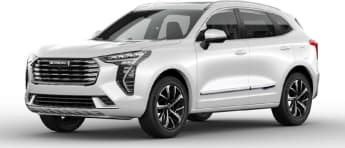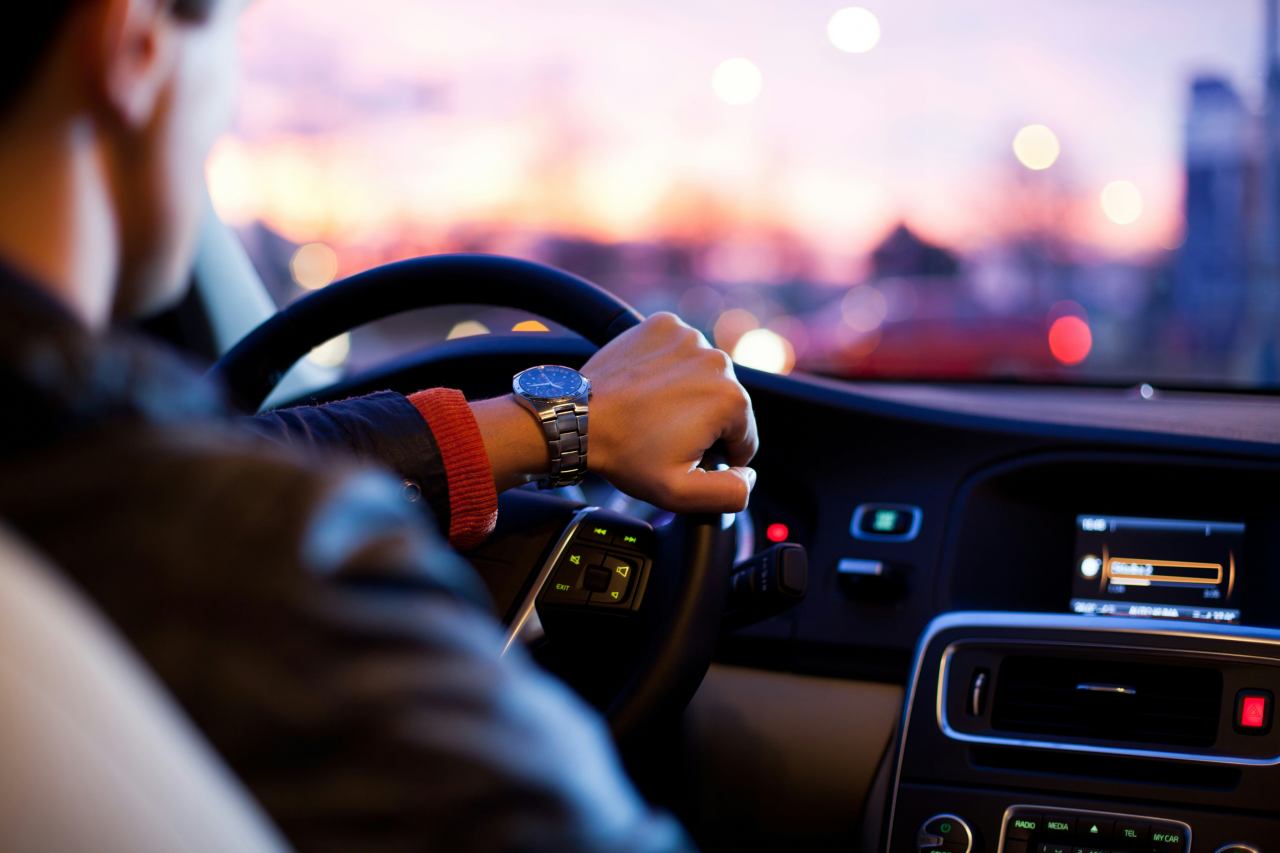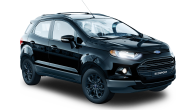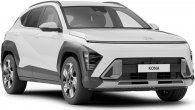The Haval Jolion. You’re reading this review because you’ve seen increasing numbers of these on the road, and you’ve probably noticed how relatively affordable they are.
It helps that the Jolion seems to be in ready supply, so unlike some of its more established rivals, you probably won’t have to wait six months for delivery.
What you’re wondering then is if it’s all too good to be true. Should you buy this Chinese SUV over its most direct MG ZST rival, or is it worth paying more and potentially waiting months for delivery of one of its Japanese or Korean rivals?
Read on to find out.
GWM Haval Jolion 2023: S
| Engine Type | Turbo 4, 1.5L |
|---|---|
| Fuel Type | Premium Unleaded Petrol |
| Fuel Efficiency | 7.5L/100km (combined) |
| Seating | 5 |
| Price From | $24,640 - $30,360 |
| Safety Rating |
|
Price and features – Does it represent good value for the price? What features does it come with?
The Jolion has made a name for itself undercutting mainstream small SUV rivals, with drive-away pricing starting from $28,490.
This is cheaper than entry-level versions of important rivals like the Kia Seltos, Mitsubishi ASX, Toyota Corolla Cross, the list goes on, but the version we’ve grabbed for this review is the latest addition to the range.
It’s the Jolion S - S for Sport, because the main drawcard for this version of the car is a bump to its power and torque, as well as a bespoke suspension tune.
.jpg)
In the Jolion line-up, the S sits above the Ultra grade, sharing its $36,990 drive-away price-tag with the Hybrid Lux.
For Haval, this is a dangerously expensive proposition, as at this money, it’s a level playing field against some very good rivals like the Corolla Cross GXL Hybrid, Kia Seltos Sport+, or the top-spec MG ZST Essence.
Standard equipment still ranks well, though, with the S grade scoring all the key stuff, including a big 12.3-inch multimedia touchscreen with wired Apple CarPlay and Android Auto support, a big sunroof, wireless charging, digital dash, a head-up display, synthetic leather interior trim, 18-inch alloy wheels, a black exterior highlight pack, dual-zone climate, heated front seats, six-way power adjust for the driver, and LED headlights.
The Jolion also scores a pretty comprehensive safety suite, although there are some issues with it which we’ll explore later.
Is it worth your money, though, to stretch to the S compared to the lower Ultra grade with the standard engine, or spend the same money on the fuel-sipping hybrid version?
There’s more devil in the detail when it comes to the drive experience, but on paper I’d say an additional few thousand dollars probably isn't worth the very slight bump in power you receive in return.
Design - Is there anything interesting about its design?
Remember when Haval’s SUVs were hideous? It was a time worth forgetting for the brand, and finally its range has moved on to new generation products, all of which are orders of magnitude better looking than their recent ancestors.
The Jolion, for example, is quite an attractive small SUV, at least from the front, with a very contemporary, glitzy grille, smart-looking LED fittings (complete with a DRL to add a bit more character), and a wide, squared-off stance.
Haval has clearly finally found its own design voice. It comes across as all neat and tidy, ready to compete with the titans of the small SUV space, until you get around the rear.
In my view this is the car’s least appealing angle, and it’s not because of the shape of the car, I think it’s been designed quite well, it’s just the plethora of badgework adorning the boot.
.jpg)
While an excess of chrome nameplates might be in vogue in China, it hasn’t translated well for an Australian audience.
Haval simply doesn’t have the gravitas to pull off the gaudy big-type letter-work across the boot, and to confuse onlookers it also says ‘GWM’ in one corner, and JOLIONS in the other, as the brand seemingly ran out of room to add a space before the S.
This alone should be warning enough there’s simply too much going on here. Nothing a heat gun and some fishing line can’t fix, however.
.jpg)
The interior takes more of a minimalist, and dare I say, European approach. I like the look of the cascading dash layers, the surprising abundance of soft-touch surfaces, and the wheel and console design which looks as though it takes a lot of influence from the likes of Peugeot.
There are still some pretty ordinary plastics strewn throughout the cabin if you look closer, however, and the synthetic leather seat trim isn’t particularly convincing.
The gaudy over-use of Haval logos has made its way onto the seats in both the first and second row… again, why?
The digital dash is also a bit dull in direct sunlight, and the software isn’t particularly customisable or attractive, which is a bit of a shame.

Practicality – How practical is its space and tech inside?
The Jolion sits in the goldilocks SUV size-bracket. It’s marketed as a ‘small SUV’ but it manages to sit between the small and mid-size segments, making it trim on the outside but massive on the inside.
Think of it as more similar to cars like the Nissan Qashqai or Mitsubishi Eclipse Cross rather than the likes of the diminutive Kia Stonic or Mazda CX-3.
Space is a big highlight in the front, adjustability is pretty good aside from the lack of telescopic reach for the steering column, and I was able to find a comfortable driving position very easily.
The raised centre console is a good looking touch, complete with a nook for a wireless charger, and a massive storage area underneath.
.jpg)
It’s also possible to cable-manage very easily, with the USB ports located underneath, and a convenient little pass through to keep them from cluttering up the space.
The phone-oriented design continues with a little rectangular cutout perfect for placing your device on its side if you’re not using the charging bay, and a flip-away lid reveals two reasonably-sized bottle holders.
Unfortunately, there’s a major usability blunder here, with the rotary gear shifter not having a limited set of positions it clicks into. It just freely rotates.
.jpg)
If you rotate it too fast it won’t register your selection, and you have to really concentrate to make sure the correct gear is selected. Seems to me to be an easy way to accidentally reverse or accelerate into a bollard or worse…
The big screens are welcome, as there’s a complete lack of buttons in the minimalist design. I found the main panel left it reasonably easy to reach touch areas, and it is backed by sufficient hardware to make it sharp, snappy, and responsive.
But then, there are some significant operability issues here, as well.
.jpg)
There’s no volume dial or toggle, so you can only adjust the system volume via the steering wheel or the audio control sub-menu buried in the system. Very annoying.
Thankfully Haval’s most recent round of updates has dumped the touch surface atop the dash for tactile climate buttons, making at least this system easy to operate while you’re on the move.
It’s such a shame to have these usability blunders, because otherwise the design is tidy and functional, and feels decent quality, too, which we can’t say of all cars of Chinese origin.
The back seat is awesome. There’s lots of room, even for those over 182cm (six feet) tall, complete with big doors which open wide for easy access, perhaps even for the fitment of child seats in the outer two seats.
The back seat offers adjustable air vents, USB power outlets, and additional bottle holders in the drop-down armrest, so it’s hard to complain about amenity for rear passengers, and as the Jolion’s platform is set up for front-drive only, there’s a perfectly flat floor back there, making it suitable for adults in the middle position.
Boot space is a whopping 430 litres which strays into mid-size SUV territory. It’s reasonably easy to load stuff in with a big hatch opening, although the boot floor is quite high so you’ll need to lift objects up and over.
You’ll also have to watch out for the tiny rear window, as it would be easy to block an already limited view out the back. A space-saver spare wheel sits below the floor.
Under the bonnet – What are the key stats for its engine and transmission?
The big sell when it comes to the Jolion S is its more powerful engine, but it’s not really much more powerful, adding an additional 20kW and 50Nm for a total of 130kW/270Nm.
This engine remains mated to a seven-speed dual-clutch automatic transmission driving the front wheels only.
Additional performance enhancements include swapping out the rear torsion bar for multi-link rear suspension, designed to enhance handling.
.jpg)
Efficiency – What is its fuel consumption? What is its driving range?
Interestingly, this new engine also comes with a reduction of 0.6L/100km in overall fuel use compared to the standard car, trimming official combined consumption to 7.5L/100km.
In reality, I experienced consumption a little higher than this, at about 8.7L/100km in my week with the car, although I was travelling at mostly urban speeds.
All Jolion models are set up to drink entry-level 91 RON unleaded as an additional bonus, and rare for turbocharged dual-clutch equipped cars.
This car also has a 55-litre fuel tank, for a theoretical cruising range of over 800km.
.jpg)
Driving – What's it like to drive?
Driving the Jolion is frustrating, because it should be very good. In terms of cars from China, it has many impressive traits, but I found the safety system in the car we tested to be frustratingly invasive.
I can look past the slightly jerky lane keep tech, as Haval is far from alone in this department, but the driver monitoring system is by far the most frustrating safety feature I have experienced in any car. Ever.
Take your eyes off the road for a brief moment, like, say, to adjust one of the many things which can only be adjusted via the multimedia screen, and the car chides you with a ringing alarm, which doesn’t go away for a while unless you jab at a tiny pop up acknowledgement on said media screen. Not only is this extremely annoying, it’s entirely counter-intuitive.
.jpg)
Sometimes it would just activate because I was wearing sunglasses or a hat, not because I wasn’t looking at the road. Other times, it would leave me alone for the entire trip.
This lead me, of course, to turn the system off, which you have to do every time you start the car.
Hopefully, this can be ironed out in a future software update, because otherwise the Jolion is very competitive to drive.
From the get-go it feels more balanced, with a better ride and handling than its key China-built rival, the MG ZS.
.jpg)
It has a firm, sporting ride, dull but adequate steering feel, and the turbo surge from the little engine keeps it feeling reasonably engaging, too.
The dual-clutch isn’t too glitchy, feeling reasonably snappy at the lights, and switching cogs with ease once you’re rolling.
It still needs some sandpapering, though. It’s entirely possible to catch it off guard, and it can present with a few glitchy moments on hills, but it’s far from the worse dual-clutch experience I’ve had.
In fact, with the improved power outputs, driving the Jolion feels quite reminiscent of entry-level Volkswagens or Skodas, bar the latter's supple ride.
.jpg)
The engine and road even sounds quite distant, imbuing the car with a higher-quality feel than expected on the freeway, largely thanks to lots of sound deadening visible in a surprisingly tidy engine bay.
On the whole I’m impressed with what the Jolion S has to offer. It feels very close to where it needs to be to take on its more established rivals, and certainly one of the better driving cars in this segment of Chinese origin.
It’s just a shame about the safety tech which tarnishes an otherwise decent drive.
Warranty & Safety Rating
Safety – What safety equipment is fitted? What is its safety rating?
It’s all well and good to tick every safety feature box, but car companies have to think about how these features might impede operation of the vehicle.
Upsettingly, the Jolion seems to have lots of great safety tech to go with the annoying driver monitoring system, including high-speed auto emergency braking, lane departure warning with lane keep assist, blind-spot monitoring with rear cross-traffic alert, rear auto braking, traffic sign recognition, as well as all the expected stability and traction gear.
.jpg)
There are also seven airbags including a centre front airbag, an impressive 360-degree camera suite, and a tyre pressure monitoring system.
The entire combustion Jolion range is covered by a maximum five-star ANCAP safety rating to the 2022 standard.
Ownership – What warranty is offered? What are its service intervals? What are its running costs?
Following in the footsteps of Kia before it, Haval offers an impressive seven-year and unlimited kilometre warranty.
This is paired with a five year/70,000km capped price service program (maintenance is required every 12 months/15,000km), which costs between $210 and $450, for a total annual average of $310. Not bad.
.jpg)
Verdict
It’s easy to see why the Jolion is making a big impact on the sales charts. It’s great value, has contemporary styling, and it’s come a long way in bridging the quality gap between Haval’s old catalogue and its rivals from Japan and Korea.
I even find it quite nice to drive, especially in this S spec, but it’s still hard to recommend given I’d probably spend the same money on the hybrid or one of the more value-oriented variants further down the range. It’s also a shame the driver assist tech is so heavy-handed, it only serves to tarnish the whole car.
In summary then: I liked this car, but wished I could like it more.
Pricing Guides





.jpg)
.jpg)
.jpg)
.jpg)
.jpg)
.jpg)
.jpg)
.jpg)
.jpg)
.jpg)
.jpg)
.jpg)
.jpg)







.png)








.jpg)
.jpg)
.jpg)
.jpg)
.jpg)
.jpg)



.jpg)
.jpg)

Comments